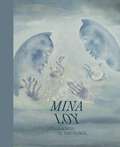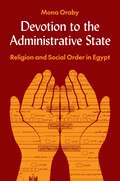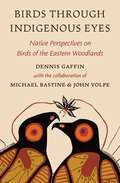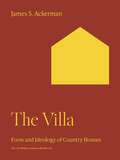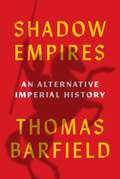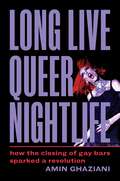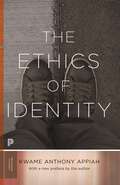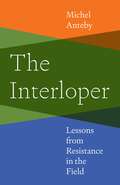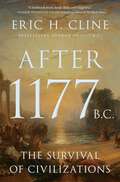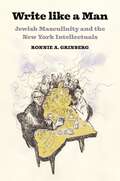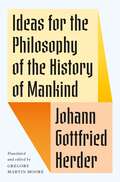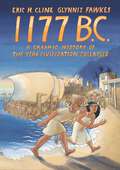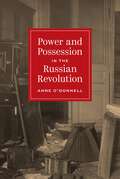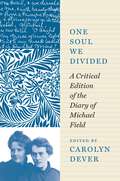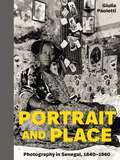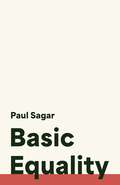- Table View
- List View
Mina Loy: Strangeness Is Inevitable
by Jennifer R. Gross Ann Lauterbach Roger L. Conover Dawn AdesA richly illustrated exploration of Mina Loy’s art and writingsMina Loy (1882–1966) was one of the most iconoclastic figures in modernism. A groundbreaking poet, she also left an indelible mark in painting, drawing, prose, art criticism, and fashion. Mina Loy: Strangeness Is Inevitable is the first book to examine the full scope of her extraordinary career, demonstrating Loy’s transformative impact on the visual arts as well as the literary avant-garde of the twentieth century.Presenting dozens of Loy’s paintings, drawings, and constructions alongside selections of her poems and writings, this book gives a comprehensive overview of the complex images and objects Loy created and situates them in the larger context of her life and work. It explores Loy’s pursuit of truth and beauty, arguing that her engagement with the emphatically “unbeautiful” materials of the Bowery—such as rags and bottle caps—reflects her questioning of truth. The book positions Loy within the broader context of surrealist art; sheds light on her relationships with influential figures such as Gertrude Stein, Marcel Duchamp, and Wyndham Lewis; and addresses Loy’s enduring relevance today.Featuring rare and previously unpublished artworks, Mina Loy: Strangeness Is Inevitable reveals this visionary artist’s extraordinary contributions as an image-maker, writer, and cultural arbiter, introducing her work to a new generation of readers and charting new directions in art history, women’s studies, poetry, and modernist studies.Published in association with the Bowdoin College Museum of ArtExhibition ScheduleBowdoin College Museum of Art, Brunswick, MaineApril 6–September 17, 2023
Devotion to the Administrative State: Religion and Social Order in Egypt
by Mona OrabyWhy the pursuit of state recognition by seemingly marginal religious groups in Egypt and elsewhere is a devotional practiceOver the past decade alone, religious communities around the world have demanded state recognition, exemption, accommodation, or protection. They make these appeals both in states with a declared religious identity and in states officially neutral toward religion. In this book, Mona Oraby argues that the pursuit of official recognition by religious minorities amounts to a devotional practice. Countering the prevailing views on secularism, Oraby contends that demands by seemingly marginal groups to have their religious differences recognized by the state in fact assure communal integrity and coherence over time. Making her case, she analyzes more than fifty years of administrative judicial trends, theological discourse, and minority claims-making practices, focusing on the activities of Coptic Orthodox Christians and Baháʼí in modern and contemporary Egypt.Oraby documents the ways that devotion is expressed across a range of sites and sources, including in lawyers&’ offices, administrative judicial verdicts, televised media and film, and invitation-only study sessions. She shows how Egypt&’s religious minorities navigated the political and legal upheavals of the 2011 uprising and now persevere amid authoritarian repression. In a Muslim-majority state, they assert their status as Islam&’s others, finding belonging by affirming their difference; and difference, Oraby argues, is the necessary foundation for collective life. Considering these activities in light of the global history of civil administration and adjudication, Oraby shows that the lengths to which these marginalized groups go to secure their status can help us to reimagine the relationship between law and religion.
Devotion to the Administrative State: Religion and Social Order in Egypt
by Mona OrabyWhy the pursuit of state recognition by seemingly marginal religious groups in Egypt and elsewhere is a devotional practiceOver the past decade alone, religious communities around the world have demanded state recognition, exemption, accommodation, or protection. They make these appeals both in states with a declared religious identity and in states officially neutral toward religion. In this book, Mona Oraby argues that the pursuit of official recognition by religious minorities amounts to a devotional practice. Countering the prevailing views on secularism, Oraby contends that demands by seemingly marginal groups to have their religious differences recognized by the state in fact assure communal integrity and coherence over time. Making her case, she analyzes more than fifty years of administrative judicial trends, theological discourse, and minority claims-making practices, focusing on the activities of Coptic Orthodox Christians and Baháʼí in modern and contemporary Egypt.Oraby documents the ways that devotion is expressed across a range of sites and sources, including in lawyers&’ offices, administrative judicial verdicts, televised media and film, and invitation-only study sessions. She shows how Egypt&’s religious minorities navigated the political and legal upheavals of the 2011 uprising and now persevere amid authoritarian repression. In a Muslim-majority state, they assert their status as Islam&’s others, finding belonging by affirming their difference; and difference, Oraby argues, is the necessary foundation for collective life. Considering these activities in light of the global history of civil administration and adjudication, Oraby shows that the lengths to which these marginalized groups go to secure their status can help us to reimagine the relationship between law and religion.
Birds through Indigenous Eyes: Native Perspectives on Birds of the Eastern Woodlands
by Dennis GaffinAn intimate and personal account of the profound roles birds play in the lives of some Indigenous peopleFor many hours over a period of years, white anthropologist Dennis Gaffin and two Indigenous friends, Michael Bastine and John Volpe, recorded their conversations about a shared passion: the birds of upstate New York and southern Ontario. In these lively, informal talks, Bastine (a healer and naturalist of Algonquin descent) and Volpe (a naturalist and animal rehabilitator of Ojibwe and Métis descent) shared their experiences of, and beliefs about, birds, describing the profound spiritual, psychological, and social roles of birds in the lives of some Indigenous people. Birds through Indigenous Eyes presents highlights of these conversations, placing them in context and showing how Native understandings of birds contrast with conventional Western views.Bastine and Volpe bring to life Algonquin, Ojibwe, and Haudenosaunee (Iroquois) beliefs about birds. They reveal how specific birds and bird species are seamlessly integrated into spirituality and everyday thought and action, how birds bring important messages to individual people, how a bird species can become associated with a person, and how birds provide warnings about our endangered environment. Over the course of the book, birds such as the house sparrow, Eastern phoebe, Northern flicker, belted kingfisher, gray catbird, cedar waxwing, and black-capped chickadee are shown in a new light—as spiritual and practical helpers that can teach humans how to live well.An original work of ethno-ornithology that offers a rare close-up look at some Native views on birds, Birds through Indigenous Eyes opens rich new perspectives on the deep connections between birds and humans.
Birds through Indigenous Eyes: Native Perspectives on Birds of the Eastern Woodlands
by Dennis GaffinAn intimate and personal account of the profound roles birds play in the lives of some Indigenous peopleFor many hours over a period of years, white anthropologist Dennis Gaffin and two Indigenous friends, Michael Bastine and John Volpe, recorded their conversations about a shared passion: the birds of upstate New York and southern Ontario. In these lively, informal talks, Bastine (a healer and naturalist of Algonquin descent) and Volpe (a naturalist and animal rehabilitator of Ojibwe and Métis descent) shared their experiences of, and beliefs about, birds, describing the profound spiritual, psychological, and social roles of birds in the lives of some Indigenous people. Birds through Indigenous Eyes presents highlights of these conversations, placing them in context and showing how Native understandings of birds contrast with conventional Western views.Bastine and Volpe bring to life Algonquin, Ojibwe, and Haudenosaunee (Iroquois) beliefs about birds. They reveal how specific birds and bird species are seamlessly integrated into spirituality and everyday thought and action, how birds bring important messages to individual people, how a bird species can become associated with a person, and how birds provide warnings about our endangered environment. Over the course of the book, birds such as the house sparrow, Eastern phoebe, Northern flicker, belted kingfisher, gray catbird, cedar waxwing, and black-capped chickadee are shown in a new light—as spiritual and practical helpers that can teach humans how to live well.An original work of ethno-ornithology that offers a rare close-up look at some Native views on birds, Birds through Indigenous Eyes opens rich new perspectives on the deep connections between birds and humans.
The Villa: Form and Ideology of Country Houses (The A. W. Mellon Lectures in the Fine Arts #34)
by James S. AckermanA classic account of the villa—from ancient Rome to the twentieth century—by “the preeminent American scholar of Italian Renaissance architecture” (Architect’s Newspaper)In The Villa, James Ackerman explores villa building in the West from ancient Rome to twentieth-century France and America. In this wide-ranging book, he illuminates such topics as the early villas of the Medici, the rise of the Palladian villa in England, and the modern villas of Frank Lloyd Wright and Le Corbusier. Ackerman uses the phenomenon of the “country place” as a focus for examining the relationships between urban and rural life, between building and the natural environment, and between architectural design and social, cultural, economic, and political forces. “The villa,” he reminds us, “accommodates a fantasy which is impervious to reality.” As city dwellers idealized country life, the villa, unlike the farmhouse, became associated with pleasure and asserted its modernity and status as a product of the architect’s imagination.
Shadow Empires: An Alternative Imperial History
by Thomas J. BarfieldAn original study of empire creation and its consequences, from ancient through early modern timesThe world’s first great empires established by the ancient Persians, Chinese, and Romans are well known, but not the empires that emerged on their margins in response to them over the course of 2,500 years. These counterempires or shadow empires, which changed the course of history, include the imperial nomad confederacies that arose in Mongolia and extorted resources from China rather than attempting to conquer it, as well as maritime empires such as ancient Athens that controlled trade without seeking territorial hegemony. In Shadow Empires, Thomas Barfield identifies seven kinds of counterempire and explores their rise, politics, economics, and longevity.What all these counterempires had in common was their interactions with existing empires that created the conditions for their development. When highly successful, these counterempires left the shadows to become the world’s largest empires—for example, those of the medieval Muslim Arabs and of the Mongol heirs of Chinggis Khan. Three former shadow empires—Manchu Qing China, Tsarist Russia, and British India—made this transformation in the late eighteenth century and came to rule most of Eurasia. However, the DNA of their origins endured in their unique ruling strategies. Indeed, world powers still use these strategies today, long after their roots in shadow empires have been forgotten.Looking afresh at the histories of important types of empires that are often ignored, Shadow Empires provides an original account of empire formation from the ancient world to the early modern period.
Shadow Empires: An Alternative Imperial History
by Thomas J. BarfieldAn original study of empire creation and its consequences, from ancient through early modern timesThe world’s first great empires established by the ancient Persians, Chinese, and Romans are well known, but not the empires that emerged on their margins in response to them over the course of 2,500 years. These counterempires or shadow empires, which changed the course of history, include the imperial nomad confederacies that arose in Mongolia and extorted resources from China rather than attempting to conquer it, as well as maritime empires such as ancient Athens that controlled trade without seeking territorial hegemony. In Shadow Empires, Thomas Barfield identifies seven kinds of counterempire and explores their rise, politics, economics, and longevity.What all these counterempires had in common was their interactions with existing empires that created the conditions for their development. When highly successful, these counterempires left the shadows to become the world’s largest empires—for example, those of the medieval Muslim Arabs and of the Mongol heirs of Chinggis Khan. Three former shadow empires—Manchu Qing China, Tsarist Russia, and British India—made this transformation in the late eighteenth century and came to rule most of Eurasia. However, the DNA of their origins endured in their unique ruling strategies. Indeed, world powers still use these strategies today, long after their roots in shadow empires have been forgotten.Looking afresh at the histories of important types of empires that are often ignored, Shadow Empires provides an original account of empire formation from the ancient world to the early modern period.
Long Live Queer Nightlife: How the Closing of Gay Bars Sparked a Revolution
by Amin GhazianiIt&’s closing time for an alarming number of gay bars in cities around the globe—but it&’s definitely not the last danceIn this exhilarating journey into underground parties, pulsating with life and limitless possibility, acclaimed author Amin Ghaziani unveils the unexpected revolution revitalizing urban nightlife.Far from the gay bar with its largely white, gay male clientele, here is a dazzling scene of secret parties—club nights—wherein culture creatives, many of whom are queer, trans, and racial minorities, reclaim the night in the name of those too long left out. Episodic, nomadic, and radically inclusive, club nights are refashioning queer nightlife in boundlessly imaginative and powerfully defiant ways.Drawing on Ghaziani&’s immersive encounters at underground parties in London and more than one hundred riveting interviews with everyone from bar owners to party producers, revelers to rabble-rousers, Long Live Queer Nightlife showcases a spectacular, if seldom-seen, vision of a queer world shimmering with self-empowerment, inventiveness, and joy.
Long Live Queer Nightlife: How the Closing of Gay Bars Sparked a Revolution
by Amin GhazianiIt&’s closing time for an alarming number of gay bars in cities around the globe—but it&’s definitely not the last danceIn this exhilarating journey into underground parties, pulsating with life and limitless possibility, acclaimed author Amin Ghaziani unveils the unexpected revolution revitalizing urban nightlife.Far from the gay bar with its largely white, gay male clientele, here is a dazzling scene of secret parties—club nights—wherein culture creatives, many of whom are queer, trans, and racial minorities, reclaim the night in the name of those too long left out. Episodic, nomadic, and radically inclusive, club nights are refashioning queer nightlife in boundlessly imaginative and powerfully defiant ways.Drawing on Ghaziani&’s immersive encounters at underground parties in London and more than one hundred riveting interviews with everyone from bar owners to party producers, revelers to rabble-rousers, Long Live Queer Nightlife showcases a spectacular, if seldom-seen, vision of a queer world shimmering with self-empowerment, inventiveness, and joy.
The Ethics of Identity (Princeton Classics #132)
by Kwame Anthony AppiahA bold vision of liberal humanism for navigating today’s complex world of growing identity politics and rising nationalismCollective identities such as race, nationality, religion, gender, and sexuality clamor for recognition and respect, sometimes at the expense of other things we value. To what extent do they constrain our freedom, and to what extent do they enable our individuality? Is diversity of value in itself? Has the rhetoric of human rights been overstretched? Kwame Anthony Appiah draws on thinkers through the ages and across the globe to explore such questions, developing an account of ethics that connects moral obligations with collective allegiances and that takes aim at clichés and received ideas about identity. This classic book takes seriously both the claims of individuality—the task of making a life—and the claims of identity, these large and often abstract social categories through which we define ourselves.
The Interloper: Lessons from Resistance in the Field
by Michel AntebyA practical and theoretical guide for field researchers struggling with accessResistance is the bane of all field researchers, who are often viewed as interlopers when they enter a community and start asking questions. People obstruct investigations and hide evidence. They shelve complaints, silence dissent, and even forget their own past and deny having done so. How can we learn about a community when its members resist so strongly? The answer is that the resistance itself is sometimes the key.Michel Anteby explains how community members often disclose more than intended when they close ranks and create obstacles. He draws insights from diverse stories of resistance by uncooperative participants—from Nazi rocket scientists and Harvard professors to Disney union busters and people who secure cadavers for medical school dissection—to reveal how field resistance manifests itself and how researchers can learn from it. He argues that many forms of resistance are retrospectively telling, and that these forms are the routine products, not by-products, of the field. That means that resistance mechanisms are not only indicative of something else happening; instead, they often are the very data points that can shed light on how participants make sense of their worlds.An essential guide for ethnographers, sociologists, and all field researchers seeking access, The Interloper shares practical and theoretical insights into the value of having the door slammed in your face.
The Interloper: Lessons from Resistance in the Field
by Michel AntebyA practical and theoretical guide for field researchers struggling with accessResistance is the bane of all field researchers, who are often viewed as interlopers when they enter a community and start asking questions. People obstruct investigations and hide evidence. They shelve complaints, silence dissent, and even forget their own past and deny having done so. How can we learn about a community when its members resist so strongly? The answer is that the resistance itself is sometimes the key.Michel Anteby explains how community members often disclose more than intended when they close ranks and create obstacles. He draws insights from diverse stories of resistance by uncooperative participants—from Nazi rocket scientists and Harvard professors to Disney union busters and people who secure cadavers for medical school dissection—to reveal how field resistance manifests itself and how researchers can learn from it. He argues that many forms of resistance are retrospectively telling, and that these forms are the routine products, not by-products, of the field. That means that resistance mechanisms are not only indicative of something else happening; instead, they often are the very data points that can shed light on how participants make sense of their worlds.An essential guide for ethnographers, sociologists, and all field researchers seeking access, The Interloper shares practical and theoretical insights into the value of having the door slammed in your face.
After 1177 B.C.: The Survival of Civilizations (Turning Points in Ancient History #12)
by Eric H. ClineIn this gripping sequel to his bestselling 1177 B.C., Eric Cline tells the story of what happened after the Bronze Age collapsed—why some civilizations endured, why some gave way to new ones, and why some disappeared forever&“A landmark book: lucid, deep, and insightful. . . . You cannot understand human civilization and self-organization without studying what happened on, before, and after 1177 B.C.&”—Nassim Nicholas Taleb, bestselling author of The Black SwanAt the end of the acclaimed history 1177 B.C., many of the Late Bronze Age civilizations of the Aegean and Eastern Mediterranean lay in ruins, undone by invasion, revolt, natural disasters, famine, and the demise of international trade. An interconnected world that had boasted major empires and societies, relative peace, robust commerce, and monumental architecture was lost and the so-called First Dark Age had begun. Now, in After 1177 B.C., Eric Cline tells the compelling story of what happened next, over four centuries, across the Aegean and Eastern Mediterranean world. It is a story of resilience, transformation, and success, as well as failures, in an age of chaos and reconfiguration.After 1177 B.C. tells how the collapse of powerful Late Bronze Age civilizations created new circumstances to which people and societies had to adapt. Those that failed to adjust disappeared from the world stage, while others transformed themselves, resulting in a new world order that included Phoenicians, Philistines, Israelites, Neo-Hittites, Neo-Assyrians, and Neo-Babylonians. Taking the story up to the resurgence of Greece marked by the first Olympic Games in 776 B.C., the book also describes how world-changing innovations such as the use of iron and the alphabet emerged amid the chaos.Filled with lessons for today's world about why some societies survive massive shocks while others do not, After 1177 B.C. reveals why this period, far from being the First Dark Age, was a new age with new inventions and new opportunities.
Write like a Man: Jewish Masculinity and the New York Intellectuals
by Ronnie GrinbergHow virility and Jewishness became hallmarks of postwar New York&’s combative intellectual sceneIn the years following World War II, the New York intellectuals became some of the most renowned critics and writers in the country. Although mostly male and Jewish, this prominent group also included women and non-Jews. Yet all of its members embraced a secular Jewish machismo that became a defining characteristic of the contemporary experience. Write like a Man examines how the New York intellectuals shared a uniquely American conception of Jewish masculinity that prized verbal confrontation, polemical aggression, and an unflinching style of argumentation.Ronnie Grinberg paints illuminating portraits of figures such as Norman Mailer, Hannah Arendt, Lionel and Diana Trilling, Mary McCarthy, Norman Podhoretz, Midge Decter, and Irving Howe. She describes how their construction of Jewish masculinity helped to propel the American Jew from outsider to insider even as they clashed over its meaning in a deeply anxious project of self-definition. Along the way, Grinberg sheds light on their fraught encounters with the most contentious issues and ideas of the day, from student radicalism and the civil rights movement to feminism, Freudianism, and neoconservatism.A spellbinding chronicle of mid-century America, Write like a Man shows how a combative and intellectually grounded vision of Jewish manhood contributed to the masculinization of intellectual life and shaped some of the most important political and cultural debates of the postwar era.
Ideas for the Philosophy of the History of Mankind
by Johann Gottfried HerderOne of the most important works of the Enlightenment—in the first new, unabridged English translation in more than two centuriesPublished in four volumes between 1784 and 1791, Herder’s Ideas for the Philosophy of the History of Mankind is one of the most important works of the Enlightenment—a bold, original, and encyclopedic synthesis of, and contribution to, the era’s philosophical debates over nature, history, culture, and the very meaning of human experience. This is the first new, unabridged English translation of the Ideas in more than two centuries. Gregory Martin Moore’s lively, modern English text, extensive introduction, and commentary bring this neglected masterpiece back to life.The Ideas—which engages with many of the leading thinkers of the eighteenth century, such as Montesquieu, Kant, Gibbon, Ferguson, Buffon, and Rousseau—is many things at once: an inquiry into the unity and purpose of history, a reflection on human nature and the place of humans in the cosmic order, an examination of what was beginning to be called “culture,” and a narrative of cultural progress across time among different peoples. Along the way, Herder considers a dizzying variety of topics, including the formation of the earth and solar system, species change, race, the immortality of the soul, the establishment of society, and the pursuit of happiness. Above all, the Ideas is an anthropology—what Alexander Pope had termed an “essay on man”—pervaded by an appropriately humane spirit.A fresh and much-needed modern translation of the complete Ideas, this volume reintroduces English readers to a classic of Enlightenment thought.
Ideas for the Philosophy of the History of Mankind
by Johann Gottfried HerderOne of the most important works of the Enlightenment—in the first new, unabridged English translation in more than two centuriesPublished in four volumes between 1784 and 1791, Herder’s Ideas for the Philosophy of the History of Mankind is one of the most important works of the Enlightenment—a bold, original, and encyclopedic synthesis of, and contribution to, the era’s philosophical debates over nature, history, culture, and the very meaning of human experience. This is the first new, unabridged English translation of the Ideas in more than two centuries. Gregory Martin Moore’s lively, modern English text, extensive introduction, and commentary bring this neglected masterpiece back to life.The Ideas—which engages with many of the leading thinkers of the eighteenth century, such as Montesquieu, Kant, Gibbon, Ferguson, Buffon, and Rousseau—is many things at once: an inquiry into the unity and purpose of history, a reflection on human nature and the place of humans in the cosmic order, an examination of what was beginning to be called “culture,” and a narrative of cultural progress across time among different peoples. Along the way, Herder considers a dizzying variety of topics, including the formation of the earth and solar system, species change, race, the immortality of the soul, the establishment of society, and the pursuit of happiness. Above all, the Ideas is an anthropology—what Alexander Pope had termed an “essay on man”—pervaded by an appropriately humane spirit.A fresh and much-needed modern translation of the complete Ideas, this volume reintroduces English readers to a classic of Enlightenment thought.
1177 B.C.: A Graphic History of the Year Civilization Collapsed
by Eric H. Cline Glynnis FawkesA beautiful, full-color graphic version of Eric Cline&’s bestselling 1177 B.C., adapted by award-winning author-illustrator Glynnis FawkesEric Cline&’s 1177 B.C. tells the story of one of history&’s greatest mysteries: what caused the ancient civilizations of the Aegean and Eastern Mediterranean to collapse more than three thousand years ago, bringing the Late Bronze Age to an abrupt end? In this vivid and captivating full-color graphic adaptation of the landmark book, author-illustrator Glynnis Fawkes invites us to follow two young friends living in the aftermath of the cataclysm as they unravel why it happened—and reveal important lessons for today&’s interconnected and vulnerable world.Pel, a member of the marauding Sea Peoples, and Shesha, an Egyptian scribe, visit the kingdoms of the Minoans, Mycenaeans, Hittites, Canaanites, Assyrians, and Egyptians to explore the calamities that brought them down. This graphic history depicts the people, events, art, architecture, and lands that Pel and Shesha encounter. We witness the Sea Peoples&’ battles on land and sea, earthquakes on the Greek mainland, droughts and famine in Anatolia, invasions in north Syria, and possible rebellions in Canaan. Along the way, we also learn about the assassination of a Hittite prince traveling to marry an Egyptian queen, the sinking of a merchant ship laden with international goods, and the return of a pair of sandals to Crete by the Babylonian king Hammurabi.An entertaining adventure story, this dazzling comic is also historically accurate and enlightening, inviting readers of all ages to think about the surprising factors and theories that explain why societies, whether ancient or modern, die or survive when struck by catastrophes.
Power and Possession in the Russian Revolution (Histories Of Economic Life Ser. #27)
by Professor Anne O'DonnellA history that reframes the Bolsheviks&’ unprecedented attempts to abolish private property after the revolutions of 1917 The revolutions of 1917 swept away not only Russia&’s governing authority but also the property order on which it stood. The upheaval sparked waves of dispossession that rapidly moved beyond the seizure of factories and farms from industrialists and landowners, envisioned by Bolshevik revolutionaries, to penetrate the bedrock of social life: the spaces where people lived. In Power and Possession in the Russian Revolution, Anne O&’Donnell reimagines the Bolsheviks&’ unprecedented effort to eradicate private property and to create a new political economy—socialism—to replace it.O&’Donnell&’s account captures the story of property in reverse, showing how the bonds connecting people to their things were broken and how new ways of knowing things, valuing them, and possessing them coalesced amid the political ferment and economic disarray of the Revolution. O&’Donnell reminds us that Russia&’s postrevolutionary confiscation of property, like many other episodes of mass dispossession in the twentieth century, largely escaped traditional forms of record keeping. She repairs this omission, drawing on sources that chronicle the lived experience of upheaval—popular petitions, apartment inspections, internal audits of revolutionary institutions, and records of the political police—to reconstruct an archive of dispossession. The result is an unusually intimate history of the Bolsheviks&’ attempts to conquer people and things.The Bolsheviks&’ reimagining of property not only changed peoples&’ lives and destinies, it formed the foundation of a new type of state—one that eschewed the defense of private property rights in favor of an enduring but enigmatic new domain: socialist state property.
Power and Possession in the Russian Revolution (Histories Of Economic Life Ser. #27)
by Professor Anne O'DonnellA history that reframes the Bolsheviks&’ unprecedented attempts to abolish private property after the revolutions of 1917 The revolutions of 1917 swept away not only Russia&’s governing authority but also the property order on which it stood. The upheaval sparked waves of dispossession that rapidly moved beyond the seizure of factories and farms from industrialists and landowners, envisioned by Bolshevik revolutionaries, to penetrate the bedrock of social life: the spaces where people lived. In Power and Possession in the Russian Revolution, Anne O&’Donnell reimagines the Bolsheviks&’ unprecedented effort to eradicate private property and to create a new political economy—socialism—to replace it.O&’Donnell&’s account captures the story of property in reverse, showing how the bonds connecting people to their things were broken and how new ways of knowing things, valuing them, and possessing them coalesced amid the political ferment and economic disarray of the Revolution. O&’Donnell reminds us that Russia&’s postrevolutionary confiscation of property, like many other episodes of mass dispossession in the twentieth century, largely escaped traditional forms of record keeping. She repairs this omission, drawing on sources that chronicle the lived experience of upheaval—popular petitions, apartment inspections, internal audits of revolutionary institutions, and records of the political police—to reconstruct an archive of dispossession. The result is an unusually intimate history of the Bolsheviks&’ attempts to conquer people and things.The Bolsheviks&’ reimagining of property not only changed peoples&’ lives and destinies, it formed the foundation of a new type of state—one that eschewed the defense of private property rights in favor of an enduring but enigmatic new domain: socialist state property.
One Soul We Divided: A Critical Edition of the Diary of Michael Field
by Michael FieldThe first book-length selection from the extraordinary unpublished diary of the late-Victorian writer “Michael Field”—the pen name of two female coauthors and romantic partnersMichael Field was known to late-Victorian readers as a superb poet and playwright—until Robert Browning let slip Field’s secret identity: in fact, “Michael Field” was a pseudonym for Katharine Bradley (1846–1914) and Edith Cooper (1862–1913), who were lovers, a devoted couple, and aunt and niece. For thirty years, they kept a joint diary titled Works and Days that eventually reached almost 10,000 pages. One Soul We Divided is the first critical edition of selections from this remarkable unpublished work.A fascinating personal and literary experiment, the diary tells the extraordinary story of the love, art, ambitions, and domestic life of a queer couple in fin de siècle London. It also tells vivid firsthand stories of the literary and artistic worlds Bradley and Cooper inhabited and of their encounters with such celebrities as Browning, Oscar Wilde, W. B. Yeats, Aubrey Beardsley, and Bernard Berenson. Carolyn Dever provides essential context, including explanatory notes, a cast of characters, a family tree, and a timeline.An unforgettable portrait of two writers and their unexpected romantic, literary, and artistic marriage, One Soul We Divided rewrites what we think we know about Victorian women, intimacy, and sexuality.
One Soul We Divided: A Critical Edition of the Diary of Michael Field
by Michael FieldThe first book-length selection from the extraordinary unpublished diary of the late-Victorian writer “Michael Field”—the pen name of two female coauthors and romantic partnersMichael Field was known to late-Victorian readers as a superb poet and playwright—until Robert Browning let slip Field’s secret identity: in fact, “Michael Field” was a pseudonym for Katharine Bradley (1846–1914) and Edith Cooper (1862–1913), who were lovers, a devoted couple, and aunt and niece. For thirty years, they kept a joint diary titled Works and Days that eventually reached almost 10,000 pages. One Soul We Divided is the first critical edition of selections from this remarkable unpublished work.A fascinating personal and literary experiment, the diary tells the extraordinary story of the love, art, ambitions, and domestic life of a queer couple in fin de siècle London. It also tells vivid firsthand stories of the literary and artistic worlds Bradley and Cooper inhabited and of their encounters with such celebrities as Browning, Oscar Wilde, W. B. Yeats, Aubrey Beardsley, and Bernard Berenson. Carolyn Dever provides essential context, including explanatory notes, a cast of characters, a family tree, and a timeline.An unforgettable portrait of two writers and their unexpected romantic, literary, and artistic marriage, One Soul We Divided rewrites what we think we know about Victorian women, intimacy, and sexuality.
Portrait and Place: Photography in Senegal, 1840–1960
by Giulia PaolettiA richly illustrated history of photography in one of the epicenters of African modernityWhen the daguerreotype first arrived in sub-Saharan Africa in the early nineteenth century, local kingdoms still held power in Senegal and the French presence was limited to trading outposts along the coast. The pioneers of photography in Senegal worked within, across, and beyond the borders of colonial empire, expanding the medium&’s possibilities and contributing to a global visual language. Portrait and Place explores these unique encounters, providing an in-depth and nuanced look at the images made at the intersection of Black Atlantic, Islamic, and African cultures.Giulia Paoletti takes readers on a visual journey from the 1840s, when the oldest-surviving daguerreotype from West Africa was made, to the 1960s, when photography became the most popular medium as Senegal achieved its independence. She discusses some of Africa&’s most celebrated modernists, such as Mama Casset, and also offers insights into lesser-known photographers like Oumar Ka and once-anonymous figures such as Macky Kane. Paoletti examines both professional and amateur artists in genres ranging from portraiture to landscape and across media such as glass painting and lithography.Featuring a wealth of breathtaking images published here for the first time, Portrait and Place brings to life the important histories of photography on the African continent.
Portrait and Place: Photography in Senegal, 1840–1960
by Giulia PaolettiA richly illustrated history of photography in one of the epicenters of African modernityWhen the daguerreotype first arrived in sub-Saharan Africa in the early nineteenth century, local kingdoms still held power in Senegal and the French presence was limited to trading outposts along the coast. The pioneers of photography in Senegal worked within, across, and beyond the borders of colonial empire, expanding the medium&’s possibilities and contributing to a global visual language. Portrait and Place explores these unique encounters, providing an in-depth and nuanced look at the images made at the intersection of Black Atlantic, Islamic, and African cultures.Giulia Paoletti takes readers on a visual journey from the 1840s, when the oldest-surviving daguerreotype from West Africa was made, to the 1960s, when photography became the most popular medium as Senegal achieved its independence. She discusses some of Africa&’s most celebrated modernists, such as Mama Casset, and also offers insights into lesser-known photographers like Oumar Ka and once-anonymous figures such as Macky Kane. Paoletti examines both professional and amateur artists in genres ranging from portraiture to landscape and across media such as glass painting and lithography.Featuring a wealth of breathtaking images published here for the first time, Portrait and Place brings to life the important histories of photography on the African continent.
Basic Equality
by Paul SagarAn innovative argument that vindicates our normative commitment to basic equality, synthesising philosophy, history, and psychologyWhat makes human beings one another&’s equals? That we are "basic equals" has become a bedrock assumption in Western moral and political philosophy. And yet establishing why we ought to believe this claim has proved fiendishly difficult, floundering in the face of the many inequalities that characterise the human condition. In this provocative work, Paul Sagar offers a novel approach to explaining and justifying basic equality. Rather than attempting to find an independent foundation for basic equality, he argues, we should instead come to see our commitment to this idea as the result of the practice of treating others as equals. Moreover, he continues, it is not enough to grapple with the problem through philosophy alone—by just thinking very hard, in our armchairs; we must draw insights from history and psychology as well.Sagar writes that, as things stand, there appear to be no good arguments for believing in the truth of basic equality. Indeed, for much of Western intellectual history and social practice, basic inequality has been the default position. How is it then, Sagar asks, that in Western societies, in a period of less than a century, basic equality emerged as the dominant view? Sagar approaches this not as a mere philosophical puzzle, but as a dramatic historical development. In so doing, he shows us what is at stake when human beings treat one another as equals just because they are human beings.
